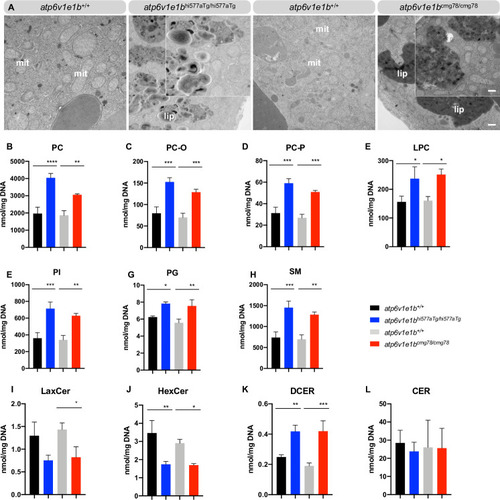Fig 5
- ID
- ZDB-FIG-210714-26
- Publication
- Pottie et al., 2021 - Loss of zebrafish atp6v1e1b, encoding a subunit of vacuolar ATPase, recapitulates human ARCL type 2C syndrome and identifies multiple pathobiological signatures
- Other Figures
- All Figure Page
- Back to All Figure Page
|
(A) Representative images of ultrathin sections of the yolk from 4 dpf WT control and |

